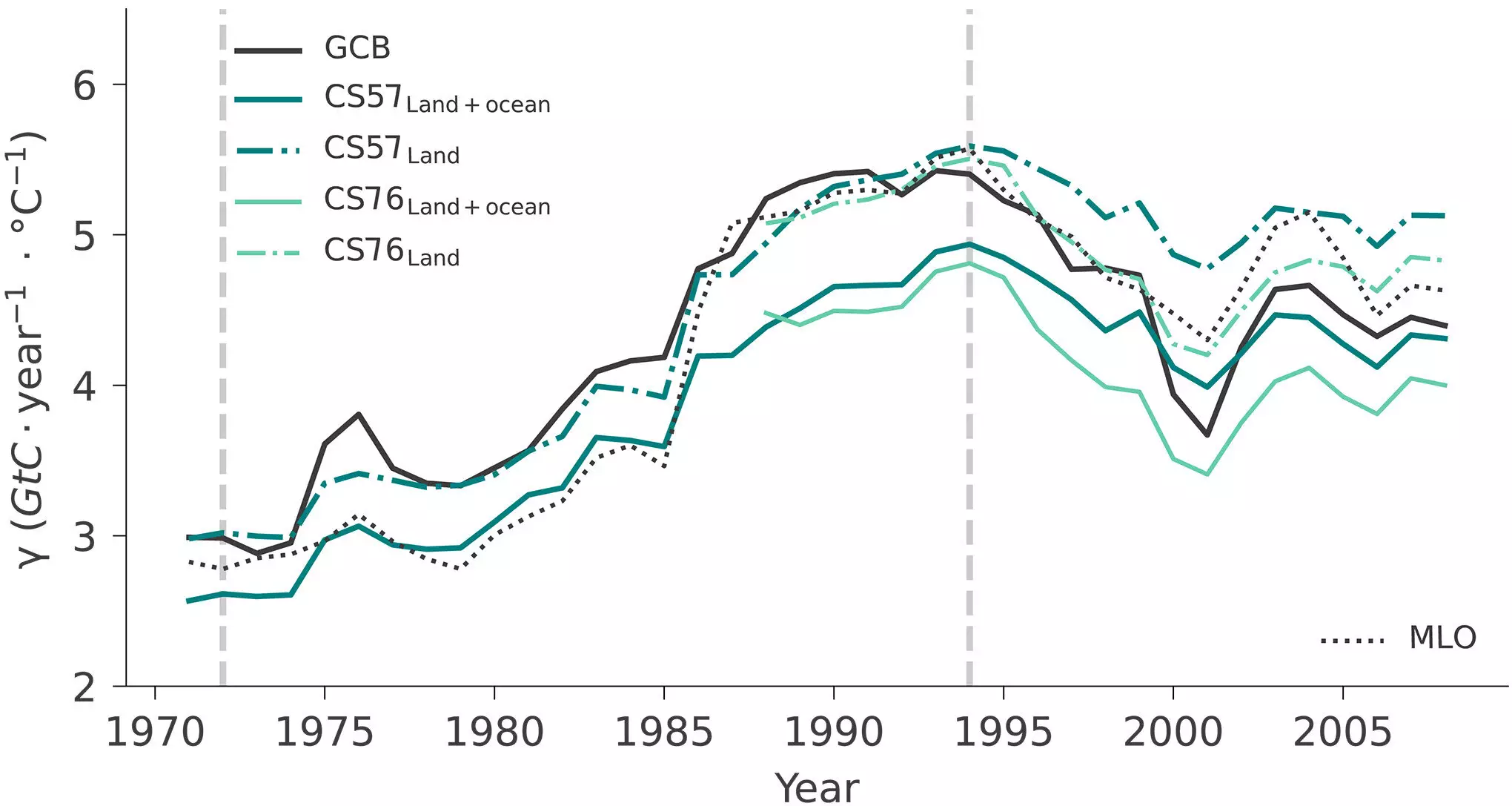The interplay between atmospheric carbon dioxide (CO₂) levels and global temperatures has long been a focal point in climate science. A recent study conducted by a team of researchers from the Max Planck Institute for Biogeochemistry and Leipzig University challenges the established notion that rising atmospheric CO₂ levels are directly correlated with long-term climate change factors such as persistent drought or systematic changes in the carbon cycle. Instead, the study suggests that the frequency and intensity of El Niño events, particularly during the late 20th century, may be largely responsible for the observed shifts in CO₂ dynamics in the tropics between 1959 and 2011.
El Niño, a periodic climate phenomenon characterized by the warming of ocean temperatures in the central and eastern Pacific, has profound effects on weather patterns globally. The latest findings indicate a notable increase—specifically, a doubling—in the sensitivity of atmospheric CO₂ concentrations to tropical temperatures when considering El Niño events. This counterintuitive association highlights the short-term volatility that extreme El Niño occurrences can impose upon carbon dynamics.
During significant El Niño years, such as 1982-83 and 1997-98, tropical regions experience heightened drought conditions and heatwaves, ultimately leading to decreased plant productivity. As vegetation struggles to thrive under such stress, it not only slows the absorption of CO₂ but can also lead to the release of stored carbon back into the atmosphere. The phenomenon of “slow-in, fast-out” within the carbon cycle aptly describes this dynamic, where ecosystems gradually take in carbon over time, only to swiftly release it during disruptive climatic events.
The researchers assert that their observation of heightened CO₂ sensitivity does not signify a permanent alteration in the way the carbon cycle operates in the face of climate change. Instead, it points toward the importance of considering internal climate variability alongside other long-term trends. As Na Li, one of the study’s lead authors, articulates, the adjustments observed in carbon cycles may thus be misleading if interpreted without context.
This distinction is crucial for developing future climate models that aim to reduce uncertainties surrounding climate projections. If extreme climate events like those stemming from El Niño are capable of producing short-term fluctuations in carbon dynamics, it becomes necessary to incorporate such factors into predictive frameworks for climate behavior.
Traditionally, climate scientists have viewed elevated CO₂ sensitivity as indicative of systematic changes due to long-term climate shifts. The implications of the recent study suggest a reevaluation of this approach. By demonstrating that natural variability, particularly through the lens of El Niño events, can create significant short-term changes, researchers can enhance the accuracy of climate models and improve predictions for future scenarios.
This study sheds light on the exigent need for a multifaceted understanding of climate dynamics, including how extreme weather phenomena affect ecological interactions and carbon storage. Recognizing that El Niño events can lead to cyclical but intense fluctuations underscores the importance of continually refining our models to account for the intricate ways climate systems interact with foundational processes such as carbon sequestration and release.
The role of El Niño in influencing atmospheric CO₂ levels and temperature sensitivity in the tropics highlights the complexity of climate systems and the necessity of adapting long-term climate models to include the influence of short-term, high-impact events. As researchers face the ongoing challenges of climate change, incorporating the nuances of natural variability will be critical in fostering accurate predictions. This emphasizes the continued importance of scientific inquiry rooted in evidence and the urgent need to reassess established assumptions in light of new findings. Understanding the delicate balances within our climate system will empower us not only to forecast future changes but also to strategize measures for mitigation and adaptation.


Leave a Reply